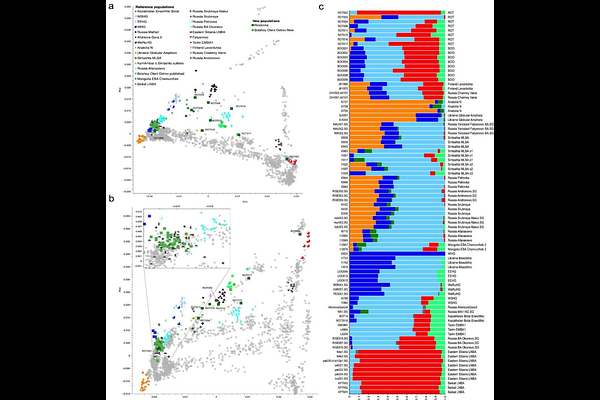Bronze Age Northern Eurasian Genetics in the Context of Development of Metallurgy and Siberian Ancestry

Bronze Age Northern Eurasian Genetics in the Context of Development of Metallurgy and Siberian Ancestry
Childebayeva, A.; Fricke, F.; Rohrlach, A. B.; Huang, L.; Schiffels, S.; Vesakoski, O.; Semerau, L.; Aron, F.; Moiseyev, V.; Khartanovich, V.; Kovtun, I.; Krause, J.; Kuzminykh, S.; Haak, W.
AbstractThe Eurasian Bronze Age (BA) has been described as a period of substantial human migrations, the emergence of pastoralism, horse domestication, and development of metallurgy. This study focuses on individuals associated with BA metallurgical production, specifically the Seima-Turbino (ST) phenomenon (~2,200-1,900 BCE) associated with elaborate metal objects found across Northern Eurasia. The genetic profiles of nine ST-associated individuals vary widely ranging between ancestries maximized in individuals from the Eastern Siberian Late Neolithic/BA, and those of the Western Steppe Middle Late BA. The genetic heterogeneity observed is consistent with the current understanding of the ST metallurgical network as a transcultural phenomenon. The new data also shed light on the temporal and spatial range of an ancient Siberian genetic ancestry component, which is shared across many Uralic-speaking populations, and which we explore further via demographic modeling using additional genome-wide (2 individuals) and whole genome data (5 individuals, including a ~30x genome) from northwestern Russia.